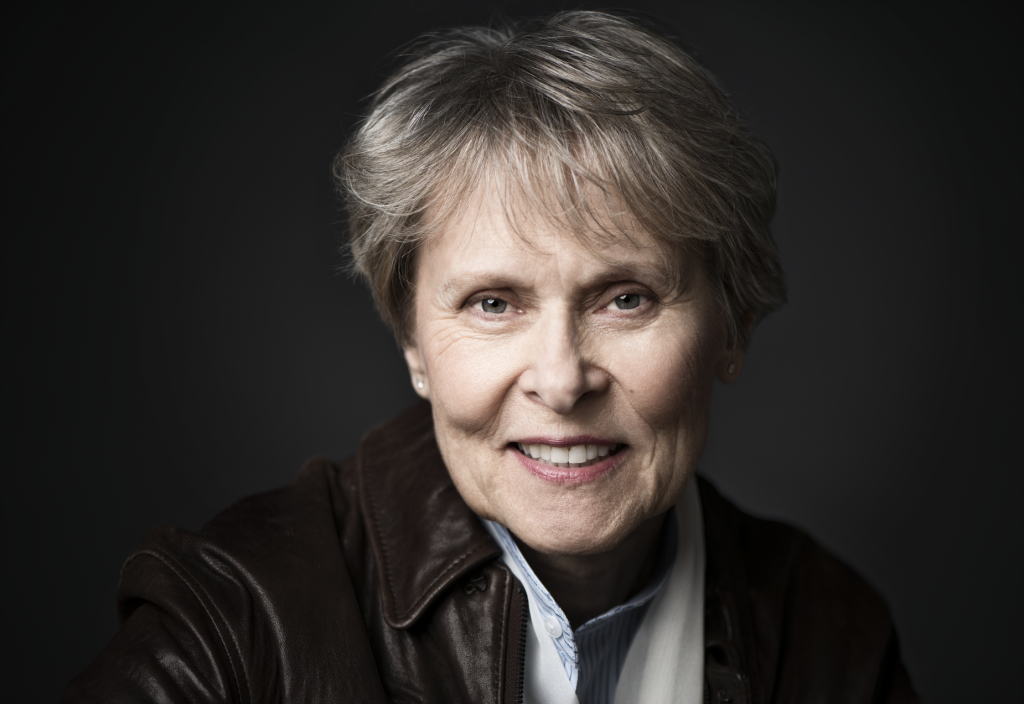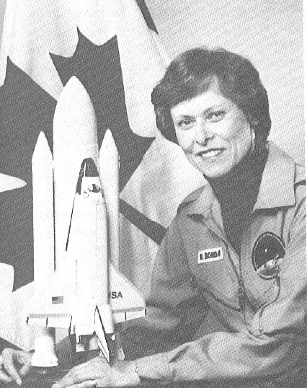Thirty years ago, McMaster graduate Roberta Bondar became the first Canadian woman in space

Roberta Bondar, a graduate of McMaster’s medical program, became the first Canadian woman in space when she flew aboard the space shuttle Discovery in January 1992. (Photo by Don Dixon).
It was thirty years ago in January 1992 that McMaster graduate Roberta Bondar left earth aboard the Space Shuttle Discovery, becoming the first Canadian woman in space and the first neurologist in space.
Bondar’s love of space came early. In a 1993 interview with the McMaster Alumni Association, Bondar recalled how as a child she would watch a Project Echo early communication satellite in the night sky over her hometown of Sault Ste. Marie, Ontario.
“My parents would always take us out and point out some of these features of the night sky. And I started being very philosophical as only an eight-year-old can be, and I realized at that time, that that there was something that I wanted to do in life that I didn’t know how to get to.”
For Bondar, getting to that goal meant 18 years at university earning four degrees.
She received a Bachelor of Science degree in zoology and agriculture from the University of Guelph in 1968, a Master of Science degree in experimental pathology from Western University in 1971, a doctorate in neurobiology from the University of Toronto in 1974 and a Doctor of Medicine degree from McMaster in 1977. She would go on to be admitted as a Fellow of the Royal College of Physicians and Surgeons of Canada in neurology in 1981.

Following her graduation from McMaster, Bondar became the director of McMaster’s Multiple Sclerosis Clinic and worked as an assistant professor of medicine in the division of neurology.
In a 1990 interview with The McMaster Courier, Bondar recalled how a conversation in the summer of 1983 with her colleague Mary Keyes (the director of McMaster’s School of Physical Education and Athletics) solidified her decision to respond to the call for Canadians to apply to NASA.
“We were having an ice cream at some little place outside of Dundas and I expressed doubts about applying for the program. She told me to go for it.” said Bondar.
Speaking to McMaster in 1990, Bondar said she thought she was selected for the mission for not only being academically qualified, but that her educational experience had taught her how to communicate and work with people.
“I found that the preparation, not only for the practice of medicine, but for developing really solid interpersonal skills [and] the ability to communicate complex ideas in very simple terms really came to fruition in medical school.”
During her pre-mission training, Bondar called on her McMaster colleague Gyan Johari, a professor in the department of materials science and engineering, for help in preparing for experiments in growing crystals in a gravity-free space environment.
She would ultimately conduct over 40 experiments as part of the STS-42 research mission during her time in space. She studied the effects of microgravity on the human body and its ability to recover, and applied her neuro-ophthalmology training at McMaster to the study of coordination of eye movements in spaceflight.
Bondar would continue this research, later spending 10 years leading a NASA team studying information from dozens of space missions and analyzing the body’s mechanisms for recovering from exposure to space.
Those eight days in January 1992 that Bondar spent looking at earth from space would spark a love of nature photography for the astronaut.
“When I first looked at the earth I was flying over the Caribbean and was able to look at the beautiful three dimensionality of colour. Not even the IMAX movies can give us that 3D colour image,” said Bondar. “It was extraordinary for me to be flying over my hometown, to be flying over Hamilton, to be flying over the Great Lakes, to see The Rocky Mountains.”
“It becomes a bonding with the whole of the life community, the whole of the environment, the whole of the human race.”
In 2009, the Roberta Bondar Foundation, a not-for-profit charity aimed at conservation efforts and the cultivation of a sense of awe, respect and admiration for the planet through art, was established.

The foundation is marking the 30th anniversary of Bondar’s historic space mission with a special upcoming event featuring the astronaut and other notable Canadians.
Bondar will share her insights on space travel, her time exploring earth as a nature photographer and how her roles as an astronaut, medical doctor, scientist, photographer and author have shaped her world views.
The event is happening virtually on Saturday, January 22nd. Tickets can be purchased here.


